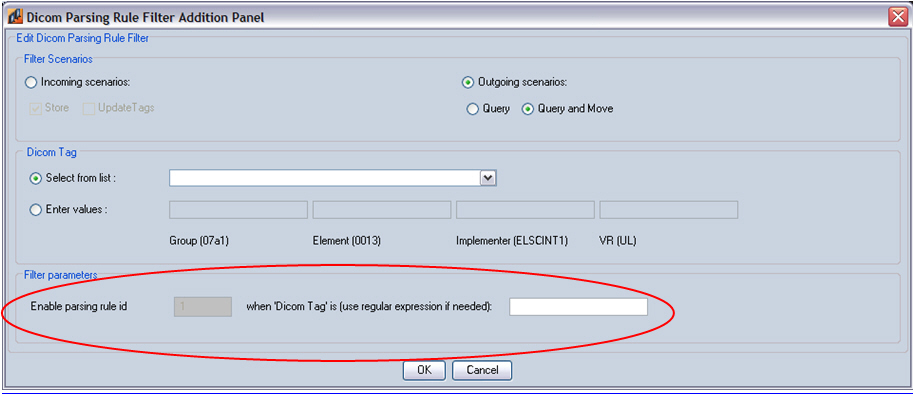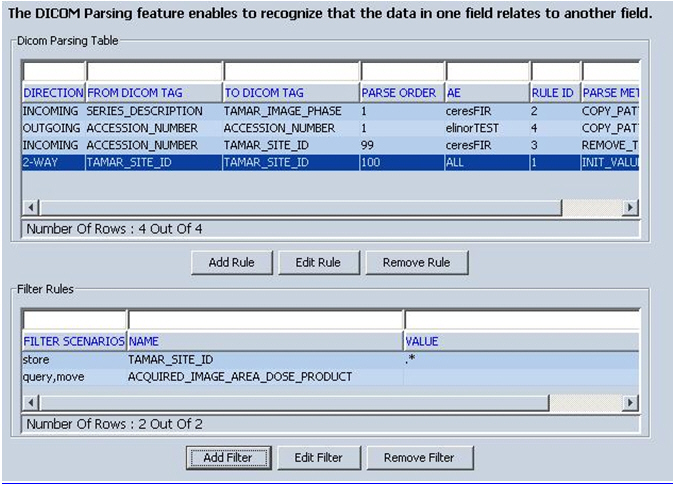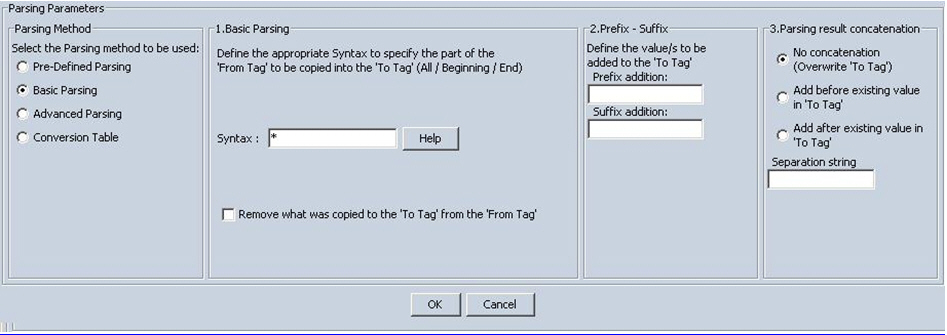
The CARESTREAM PACS Workflow Manager relies on comprehensive and accurate data from different Application Entities (AEs) to properly index and store images. Many AEs have a limited number of data fields on their input screen. The available fields are often insufficient for users to enter the image data required by the CARESTREAM PACS Workflow Manager. This can result in operators entering two descriptions/values into one field.
Using a bi-directional DICOM parsing rules The Tag Morphing feature allows the archive to reference an internal library of PACS-specific tag addresses and attributes. With this capability, modification of a DICOM header may easily be applied when transmitting DICOM image data acquired on one vendor PACS for widespread access to other users.
For example, a single field might contain both the study description and the patient sex. The DICOM Parsing feature alleviates this problem by enabling the CARESTREAM PACS Workflow Manager users to utilize existing DICOM fields that are either empty or partially unused to enter additional data. It can change the data fields as they are pushed into the Online Storage Manager server, as well as move selected data to other fields.

In the case of an empty field, the DICOM Parsing feature enables the CARESTREAM PACS Workflow Manager to recognize that the data in one field relates to another field, by transforming the field tag without affecting the input screen. In case of a partially unused field, multiple data is entered in a single field, divided by separators, and then broken into smaller chunks of information, each forming a distinct DICOM tag. In both cases, once the images are imported into the CARESTREAM PACS Workflow Manager, they can be indexed and stored accurately and efficiently.
Using the rules in a Tag Morphing scenario can provide any user the ability to replace their existing PACS system, for example, while maintaining data integrity.
The parsing mechanism supports two main scenarios:
Exporting data from the WFM - Query or Move
Inserting data to the WFM - Store or Update tags
The Rule Filter window allows you to apply the rule on export:

Choose Query to set the value query in DSER_PARSE_RULE_FILTER.FILTER_SCENARIOS.
Choose Move and Query to set the values query and move in this column.
Regular Expressions Usage
The tag filter value can be set to either a tag value or regular expression.
NOTE: A rule is activated only when all filters in the relevant direction are met. If other filters exist for the rule, when only one filter condition is met, this is insufficient to activate the rule
The Direction column in the Parsing Rules Table indicates whether the rule has incoming, outgoing or 2-way filters.

Concatenation Rule
If it is necessary to concatenate the parsing results to an additional tag, this can be performed in the DICOM Parsing Rule Editing Panel.
1. Choose the Parsing method.
2. Add basic Parsing tag.
3. Add any prefix or suffix values.
4. Parsing result concatenation.
a. No Concatenation
b. Add before existing value in the To Tag
c. Add after the existing value in the To Tag
d. Add any separation string, if required

NOTE: Tag Morphing/DICOM Parsing is based on a number of predefined, configurable rules. These rules can be configured using the Admin Tool. Contact Customer Service for more information.